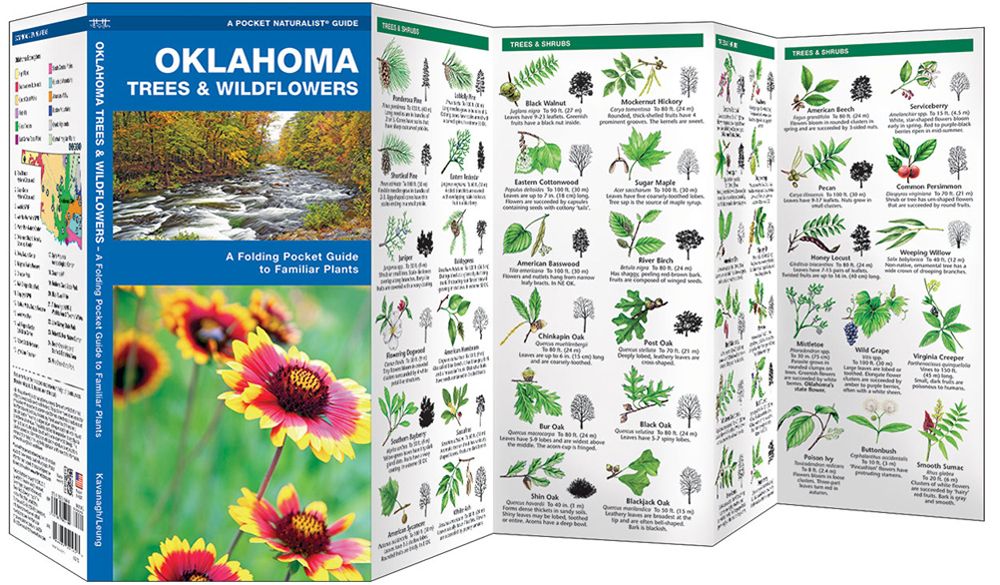Plants Native To Oklahoma: A Comprehensive Guide and Printable Resources
Oklahoma, with its diverse landscape and rich biodiversity, is home to a remarkable array of native plants. From towering trees to delicate wildflowers, these plants play a vital role in the state’s ecosystems, providing food and shelter for wildlife, contributing to soil health, and supporting the overall ecological balance. This comprehensive guide explores the fascinating world of plants native to Oklahoma, offering insights into their unique characteristics, ecological importance, and practical applications in landscaping.
As we delve into the intricacies of Oklahoma’s native flora, we will discover the remarkable adaptations that allow these plants to thrive in the state’s diverse climate and environments. We will also explore the role of native plants in maintaining the health and resilience of Oklahoma’s ecosystems, emphasizing the importance of their preservation and protection. Additionally, this guide will provide valuable resources for incorporating native plants into landscaping designs, showcasing their benefits and sharing examples of successful projects.
Plant Diversity in Oklahoma

Oklahoma boasts an impressive array of native plant species, reflecting its diverse climate and habitats. From towering trees to delicate wildflowers, these plants showcase remarkable adaptations to the state’s unique environment.
The state’s plant life can be broadly categorized based on their growth habits:
Trees
- Oak (Quercus species)
- Hickory (Carya species)
- Walnut (Juglans species)
- Maple (Acer species)
- Elm (Ulmus species)
Shrubs
- Sumac (Rhus species)
- Chokecherry (Prunus virginiana)
- Dogwood (Cornus species)
- Viburnum (Viburnum species)
- Elderberry (Sambucus species)
Wildflowers
- Indian Blanket (Gaillardia pulchella)
- Purple Coneflower (Echinacea purpurea)
- Black-eyed Susan (Rudbeckia hirta)
- Wild Petunia (Ruellia humilis)
- Prairie Phlox (Phlox pilosa)
Grasses
- Big Bluestem (Andropogon gerardii)
- Indian Grass (Sorghastrum nutans)
- Little Bluestem (Schizachyrium scoparium)
- Switchgrass (Panicum virgatum)
- Buffalo Grass (Bouteloua dactyloides)
These plants exhibit a range of adaptations that allow them to thrive in Oklahoma’s climate, which includes hot, humid summers and cold, dry winters. Many trees have thick bark to protect them from fire, while some wildflowers have deep taproots to access water during droughts.
Native Plant Landscaping

Native plant landscaping involves incorporating plant species that are indigenous to a particular region into landscaping designs. Using native plants offers several advantages, including:
- Drought tolerance: Native plants have evolved to thrive in local climate conditions, making them well-suited for areas with limited water availability.
- Disease resistance: Native plants have developed natural resistance to local pests and diseases, reducing the need for chemical treatments.
- Wildlife attraction: Native plants provide food and shelter for local wildlife, supporting biodiversity and creating a more sustainable ecosystem.
In Oklahoma, there are numerous examples of successful native plant landscaping projects. One notable example is the Myriad Botanical Gardens in Oklahoma City, which features a variety of native plant species incorporated into its landscaping design. The gardens showcase the beauty and diversity of Oklahoma’s native flora, while also providing a habitat for local wildlife.
Printable Resources

Blud, we got your back with a sick guide to the greenery that’s native to Oklahoma. It’s gonna be your cheat sheet for spotting all the cool plants in the wild or in the classroom.
This guide is the bomb, bruv. It’s got it all: peng pictures, descriptions that’ll make you sound like a plant whisperer, and tips to help you tell the difference between the lush and the not-so-lush.
Printable Guide to Common Native Plants in Oklahoma
This printable guide is your passport to the plant kingdom of Oklahoma. Keep it handy on your nature walks or whip it out in class to impress your teacher. It’s like having a plant encyclopedia in your pocket, but way cooler.
Frequently Asked Questions
What are the most common types of native plants found in Oklahoma?
Oklahoma is home to a wide variety of native plants, including trees such as oaks, hickories, and pecans; shrubs like sumacs, blueberries, and redbuds; wildflowers such as black-eyed Susans, coneflowers, and Indian paintbrush; and grasses like little bluestem, big bluestem, and Indiangrass.
How do native plants benefit the environment?
Native plants provide food and shelter for wildlife, support pollinators, contribute to soil health by preventing erosion and improving water infiltration, and help regulate the climate by absorbing carbon dioxide and releasing oxygen.
Why is it important to preserve native plant communities?
Preserving native plant communities is crucial for maintaining biodiversity, supporting wildlife populations, and ensuring the long-term health and resilience of Oklahoma’s ecosystems.
How can I incorporate native plants into my landscaping?
Incorporating native plants into landscaping offers numerous benefits, including drought tolerance, disease resistance, and wildlife attraction. Consider using native plants in rain gardens, pollinator gardens, and other sustainable landscaping practices.




